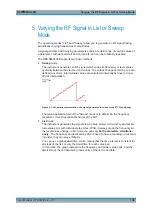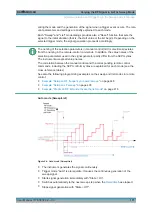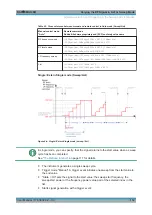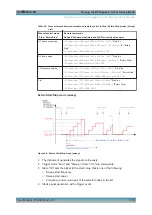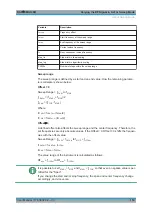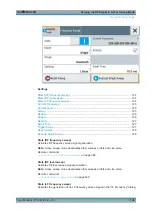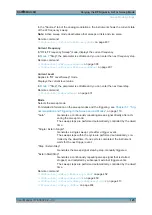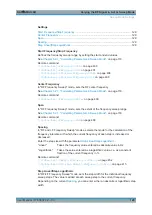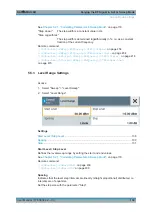
Varying the RF Signal in List or Sweep Mode
R&S
®
SMA100B
122
User Manual 1178.3834.02 ─ 03
Figure 5-8: Dwell Time vs. settling time
1 = "Dwell Time" (as set with the parameter)
2 = Settling time
3 = Dwell time (effective)
The set dwell time defines the duration of a list or sweep step. However, the time the
instrument requires for the signal to settle reduces the effective dwell time.
t
dwell(effective)
=
t
dwell
-
t
setlting
In "Single" mode, the time between two entries determines the duration of a step, and
accordingly, the time between two trigger events in "Extern Step" mode. In these oper-
ating modes, the dwell time does not affect signal generation.
Hardware adjustments
The first time a list (new or modified) is processed, the instrument automatically calcu-
lates the necessary hardware settings. It can be performed during list processing, but
delays the first cycle, especially with short dwell times.
With long dwell times, you can perform this calculation while the list is being pro-
cessed; the entered dwell times are observed. With short dwell times, calculation of the
hardware settings increases the dwell time for the initial processing cycle; the entered
value is only observed from the second processing cycle onwards. In this case, a mes-
sage indicates that there is a deviation between the current and set dwell times. After
the first cycle, you do not need to perform additional calculations. The current dwell
times do not deviate from the set dwell times.
Blanking
The instrument is equipped with a
blanking
circuit, which temporarily switches off the
RF signal whenever the frequency changes, until the signal has settled to a stable
state.
Live list processing mode
The R&S
SMA100B generates the signal directly from the value pairs in the database,
and adjusts the hardware settings accordingly. The current instrument state and thus
any change during the signal generation directly affects the RF signal. The temporary
memory is not used.
Significant Parameters and Functions


